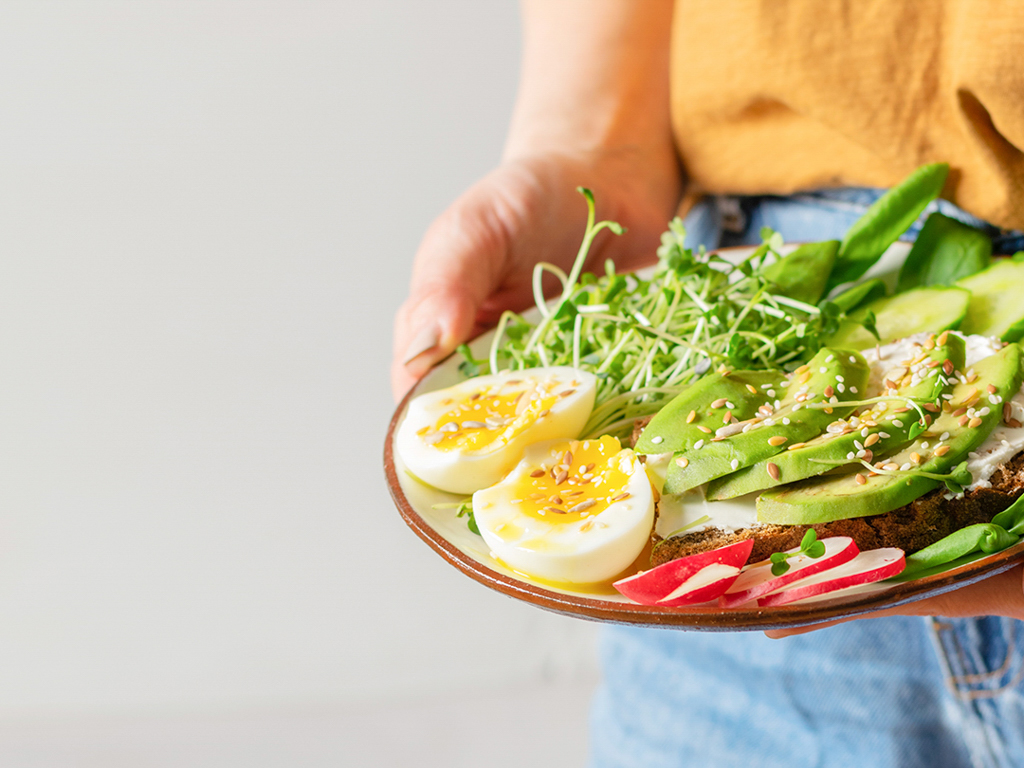My Plate—a tool designed by the United States Department of Agriculture— illustrates the five food groups that are the building blocks for a healthy diet. Building a healthy plate and good portion control starts with the right foods in the right amounts. These simple guidelines will help you build a healthier plate.
FRUITS
Focus on whole fruits. Fruits provide important vitamins and minerals—including potassium, vitamins A and C, and folic acid.
Fruit options include apples, apricots, bananas, blueberries, cantaloupe, cherries, grapes, grapefruit, honeydew, kiwifruit, oranges, peaches, pears, pineapple, plums, raspberries, and strawberries.
VEGETABLES
Vary your veggies. Low in fat and calories, vegetables may also protect against heart disease and certain cancers.
Vegetable options include asparagus, artichoke, broccoli, Brussels sprouts, cabbage, cauliflower, celery, cucumber, dark green leafy lettuce, eggplant, green beans, mushrooms, onion, pepper, spinach, squash, sweet potato, and tomato.
GRAINS
Make half your grains whole grains. Whole grains contain fiber and key nutrients such as iron, magnesium, and folic acid. Make half of the grains you eat whole grains.
Good grain options include brown rice, bulgur wheat, high-fiber cereal, oatmeal, whole-grain pasta, whole-grain bread, whole-grain tortillas, and whole-wheat couscous. Protein Vary your protein routine. Protein helps the body repair muscles and cartilage. Choose lean proteins such as chicken or turkey without skin, fish (tuna, salmon, tilapia), lean cuts of beef or pork, tofu, beans, eggs, and peanut butter.
DAIRY
Switch to low-fat or fat-free milk and yogurt. Dairy products contain calcium that helps keep bones strong.
Good choices include low-fat cheese, yogurt, or cottage cheese, and low- fat or fat-free milk.
NEED HELP WITH PORTION CONTROL?
Sometimes this can be the hardest part to gauge. Preparing meals at home can help you control your portions—as long we avoid second or third helpings. Use smaller plates and bowls to help you choose smaller amounts of food. Have meals at the table instead of in front of the television—being aware of what you’re eating will help you to eat smaller portions.
When dining out, ask about half-size or lunch-size portions. Ask for a to-go box and put away half your meal before you start eating.
Take small sips of water in between bites to help you slow down and recognize when you are full. For a food tracker, BMI calculator, recipes, sample menus, quizzes, interactive tools, and more helpful materials, visit choosemyplate.gov.
Select Health may link to other websites for your convenience. Select Health does not expressly or implicitly recommend or endorse the views, opinions, specific services, or products referenced at other websites linked to the Select Health site, unless explicitly stated.
The content presented here is for your information only. It is not a substitute for professional medical advice, and it should not be used to diagnose or treat a health problem or disease. Please consult your healthcare provider if you have any questions or concerns.
